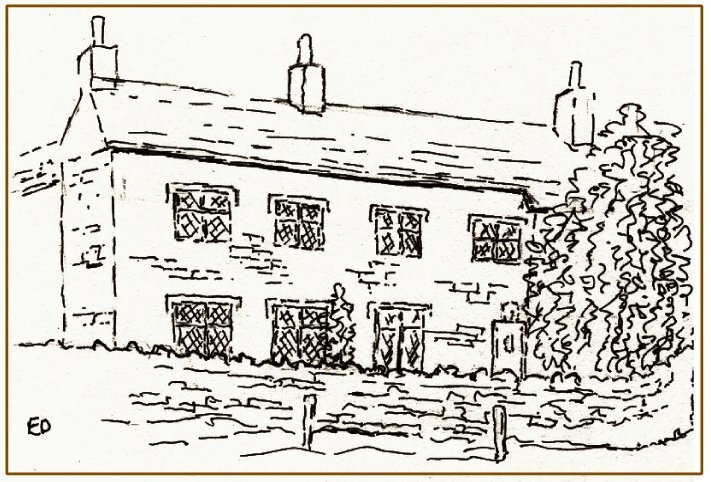|
Carr Garth is a grade II listed building on Bailey Lane. Parts of it date back to the 17th century, when, according to the Tithe map, it appeared to be similar in size to the cottage adjoining the Heritage Centre. The Tithe Schedule tells us that Carr Garth was owned by John Taylor Wilson, but occupied by William Brown. John Taylor Wilson was a Lancaster Solicitor and Mayor no less than three times in 1807, 1816-17 and 1826-27. He died aged 76 in 1839. At this point Thomas John Knowlys of Heysham Tower comes into the story. Mr Knowlys was said to be critical of the local school as ‘not evangelical enough’, hence the reasons for starting the new school. An 1851 Directory contains the following: In Heysham are two schools, one called the parish school, having an income of £19. 7s. 6d per annum arising from stock and lands, left by Joseph Banks and RobertThompson; and the other built and chiefly supported by John Knowlys Esq.’ |
 Image - line drawing of Carr Garth made about 1998 by Eileen Dent. In Heysham Peninsula (HHA 2000) Image - line drawing of Carr Garth made about 1998 by Eileen Dent. In Heysham Peninsula (HHA 2000) |
It is likely that T J Knowlys became the next owner of Carr Garth after John Taylor Wilson and turned it into a school, Clearly in its previous size it was far too small and he therefore extended it to become the building we have today. Eileen Dent estimates the school opened around 1840. The full extract from the 1851Directory shows the name of the first schoolmaster was a James Masheter. One famous pupil was James Williamson who later became Lord Ashton of Lancaster.
By the end of the century the school would appear to have closed as there is no mention of it in the section on Heysham of Kelly’s 1905 Directory of Lancashire,
During the first World War (1914-1918) Carr Garth was used as a convalescent home for officers. It was offered for this purpose by the then owner, a Miss Smith in l915, who said that it had to be used as a Convalescent Home for our brave troops for the duration of the War.
In l920 the property was taken over by the church and made into a guest house for the clergy. During this period, the old school bell was removed from the roof at the rear of the building. In l950 the property was purchased by Norman and Alice Walkington, the parents of the recent owners.
The Walkingtons continued to run the place as a guest house until l970, when they handed it over to their daughter and son-in-law who continued to run it as a guest house until 1995. The house is now a private residence.
The name Carr Garth is of Norse origin. Carr or Scarr, meaning a jagged or precipitous rock or sea cliff, and Garth, meaning enclosed area or paddock. (There was a quarry immediately behind the building.)
